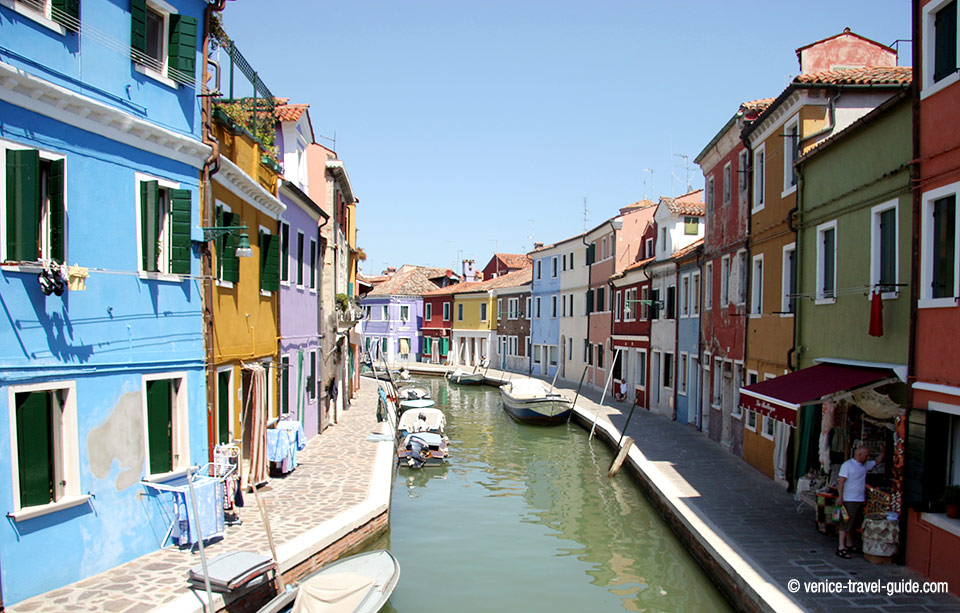The Burano Island is the most picturesque of the lagoon islands due to the extraordinary colours of its low houses, doors and windows, which look like the work of naive painters.
The island can be reached in less than an hour from the Fondamenta Nuove and in half an hour from San Zaccaria. Burano is made up of four little islands.
Laces and fishery are the island's main resources. The embroideries unite fantasy and delicacy; the most difficult and well-known stitch is the so-called air-stitch, which is a real miracle of Burano's lace-makers. The island has a high density of population and on its old narrow streets and coasts there are hundreds of stalls and shops.
The island is linked to Mazzorbo by a bridge.
Culture and main sights
Burano is also known for its small, brightly-painted houses, popular with artists. The designer Philippe Starck owns three houses. The colours of the houses follow a specific system originating from the golden age of its development; if someone wishes to paint their home, one must send a request to the government, who will respond by making notice of the certain colours permitted for that lot. This practice has resulted in the myriad of warm, pastel colours that characterises the island today.
Other attractions include the Church of San Martino, with a campanile, the Oratorio di Santa Barbara and the Museum and School of Lacemaking.
Burano Lace museum
The Lace Museum is situated in a Venetian Gothic building, where the historic Lace school was once located. The exhibition, curated by Doretta Davanzo Poli, provides an overview of the history and development of lace in Burano from the 16th to the 20th century. Around 200 rare and precious examples of work are on display: masterpieces of the needle and bobbin art - selected from the most important collections of the Venice civic museum foundation - paintings, etchings, drawings, documents, magazines and textiles.
Burano Lace Museum opening hours
- From April 1st to October 31st: Open 10:00 - 16:00. Last admission 15:30.
- From November 1st to March 31st: Open 10:00 - 16:00. Last admission 15:30.
- Closed on Monday, December 25th, January 1st and May 1st.
History of Burano
The island was probably settled by the Romans, and in the 6th century was occupied by people from Altino, who named it for one of the gates of their former city. Two stories are attributed to how the city obtained its name. One is that it was initially founded by the Buriana family, and another is that the first settlers of Burano came from the small island of Buranello, 8 km to the south.
Although the island soon became a thriving settlement, it was administered from Torcello and had none of the privileges of that island or of Murano. It rose in importance only in the 16th century, when women on the island began making lace with needles, being introduced to such a trade via Venetian-ruled Cyprus. When Leonardo da Vinci visited in 1481, he visited the small town of Lefkara and purchased a cloth for the main altar of the Duomo di Milano. The lace was soon exported across Europe, but trade began to decline in the 18th century and the industry did not revive until 1872, when a school of lacemaking was opened. Lacemaking on the island boomed again, but few now make lace in the traditional manner as it is extremely time-consuming and therefore expensive.



